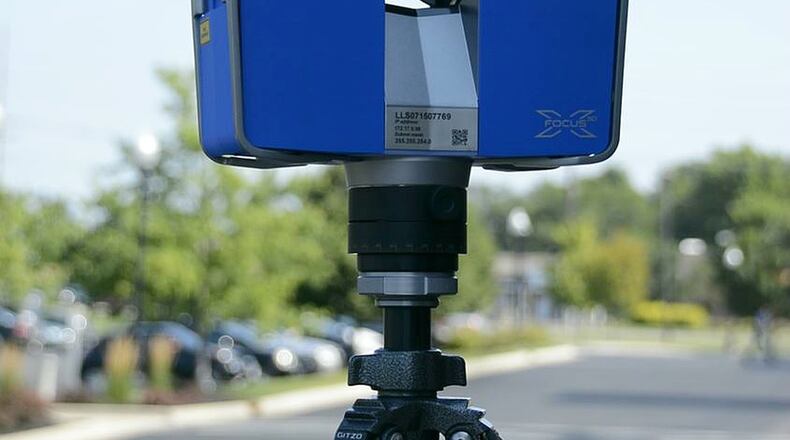“When you’re looking at technology, you’re looking at efficiencies. There are technologies that can be used,” he said. “As things appear to fit our need, we’ll try to plan it in our budget process.”
RELATED: Fairfield Police Department purchases body cameras
And they have. City Council approved the police department to purchase body cameras, a training simulator and an audio/visual enhancement interface. All of this new technology was spent from the drug forfeiture funds the city collects.
The department comes across this new technology from literature or interacting with what officers are using at other agencies, which Dickey sees quite a few as a Commission on Accreditation for Law Enforcement Agencies assessment team leader.
“It’s the technology that other agencies are using that you can either partner with them, or you can buy it yourself,” he said.
RELATED: Fairfield's training simulator readies officers for pressure scenarios
According to the Center for Evidence-Based Crime Policy at George Mason University, police technology can cover a number of innovations and advances in policing in recent decades. In-vehicle computers are pretty much as standard piece of equipment for officers, but many are incorporating more technology in order to do the job, such as body cameras, license plate readers, 3-D crime scene imaging.
And the smart phones officers use are light-years ahead previous mobile phone technology.
The city purchased three years ago a 3-D laser scanner that can map crime scenes and serious accident scenes, providing an interactive three-dimensional photo. While the city has used this tool for its own investigations, it's been used in investigations by the Hamilton Police Department most notably the fatal shooting at the Doubles Bar last year.
RELATED: One year later, Hamilton’s violent summer still filling courtrooms
“They had probably a couple of days worth of mapping to do and our folks went out at their request and mapped it in a couple of hours,” said Dickey. “It benefited Hamilton by saving them many hours to get an accurate description (of the large crime scene).”
Fairfield Police Lt. Steve Maynard said it doesn’t matter how much technology a police agency has, because with “good, old-fashion police work, you’ll never replace that with technology.”
“It’s officers on the street that know these people the majority of the time that solve the crime,” he said.
But the difference in solving a crime sooner can be quality information, such being able to enhance video from a bank or convenient store file to obtain a clear image.
Maynard and Dickey said the department doesn’t go after every piece of new technology that’s available because the return on investment has to be favorable. That’s why they purchased the 3-D laser scanner a couple of years ago with drug forfeiture money, they said.
“Previous to this device, they used a generational device that surveyors used,” Dickey said.
Surveyor equipment took at least two people to take measurements, and hours and possibly days to map out. The scanner takes what can be considered an interactive 3-D photo of a scene that can precisely measure distances between points.
Drones are also being discussed among the leadership of the Fairfield Police Department. It’s unlikely one would be purchased at this point in time, though the return on investment has the potential to be high.
“I’ve seen some pretty impressive drones I could see there would be an application for law enforcement. It’s something we can explore,” Maynard said. “They certainly could play a significant role in law enforcement.”
About the Author

